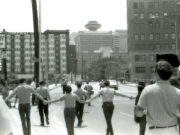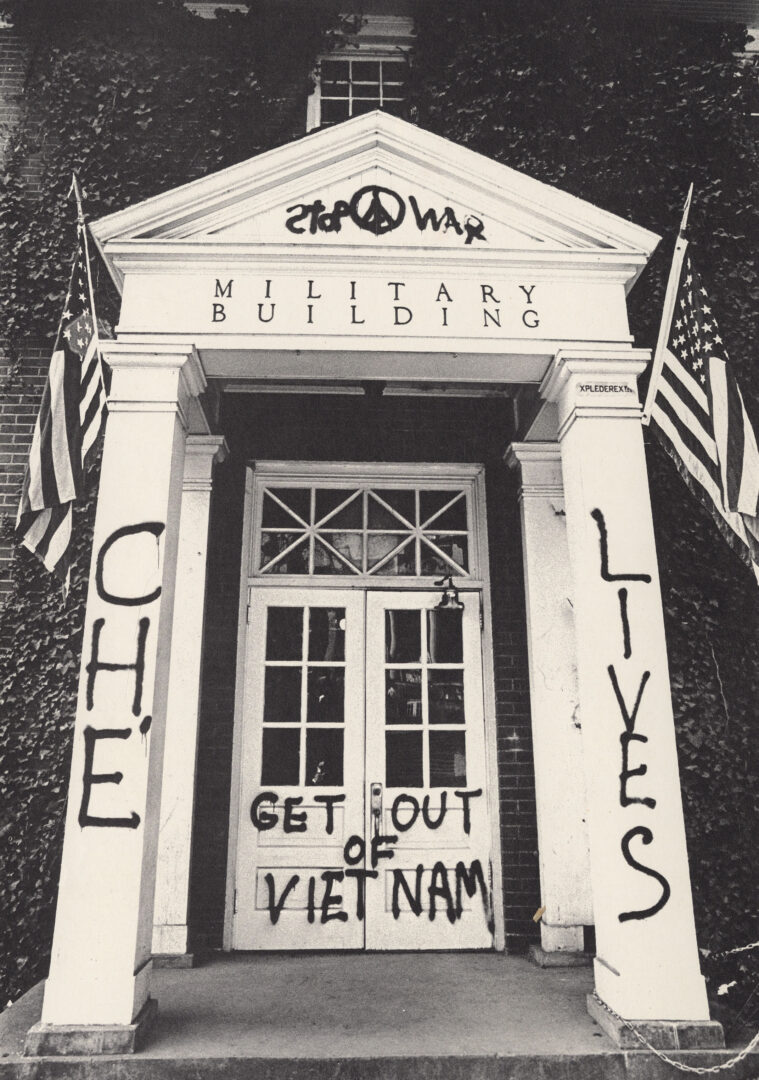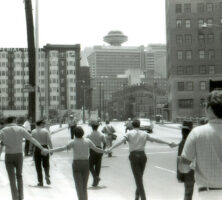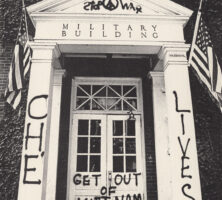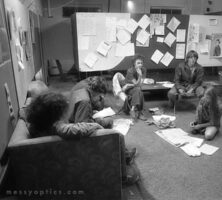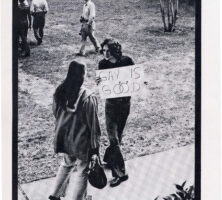During the 1960s Georgia and the rest of the country experienced an increase in student activism on its college campuses and in its cities. Opposed to U.S. political leadership and dissatisfied with American culture, student activists held demonstrations across the state and experimented with lifestyle changes in the hope of effecting fundamental change in American life.
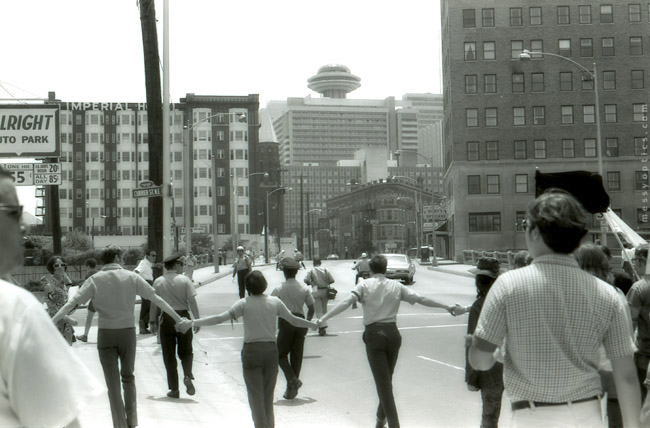
Photograph by Carter Tomassi
The student movement, also called the New Left because it represented the latest manifestation of left-leaning political activism, gained converts on campuses across the nation throughout the decade. In Georgia several schools maintained chapters of national and regional student organizations, such as Students for a Democratic Society and the Southern Student Organizing Committee (SSOC). Georgia student leaders often looked to the national New Left for guidance and inspiration. Georgia student activists who joined the civil rights and student movements routinely risked arrest and physical harm, as well as alienation from their more conservative friends and families.
Civil Rights Movement
The civil rights movement motivated many of Georgia’s New Left leaders to become involved in political activism. Morehouse College student Lonnie King, inspired by restaurant sit-ins in Greensboro, North Carolina, organized a protest campaign by drawing three student leaders from each of Atlanta’s six historically Black colleges and universities: Atlanta University and Clark College (later Clark Atlanta University), the Interdenominational Theological Center, Morehouse, Morris Brown College, and Spelman College) and talking to the schools’ presidents. The resulting coalition, called the Committee on Appeal for Human Rights (COAHR), organized ten sit-ins by 200 students in downtown Atlanta on March 15, 1960. (In fear of such demonstrations, the Georgia legislature had recently made sit-ins a misdemeanor.) The Student Nonviolent Coordinating Committee (SNCC) continued the sit-ins with COAHR in October, and Martin Luther King Jr. was arrested along with other protestors on October 19. Because, in part, of the economic stress brought on by such protests, Atlanta outlawed segregation in public facilities in the fall of 1961.
In 1964 Emory University student Gene Guerrero became the first chairman of SSOC; he turned to activism after being arrested at a 1963 civil rights sit-in in Atlanta.
Activism at UGA
The University of Georgia (UGA) in Athens possessed a dedicated community of activists during the 1960s. In April 1968 students conducted a three-day sit-in at the Academic Building to protest the unequal treatment of female students. (The dress code and curfew rules were stricter for women than for men, and women, unlike men, were banned from living off campus and from drinking.) In the wake of the killing of four students by National Guardsmen at Kent State University in Ohio in May 1970, 3,000 students demonstrated on the UGA campus, leading the Board of Regents to close all schools in the University System of Georgia for two days. UGA did not escape the growing commitment to violence that characterized the national New Left in the late 1960s. On five separate occasions from 1968 to 1972, student activists attempted unsuccessfully to burn down the military building on campus.
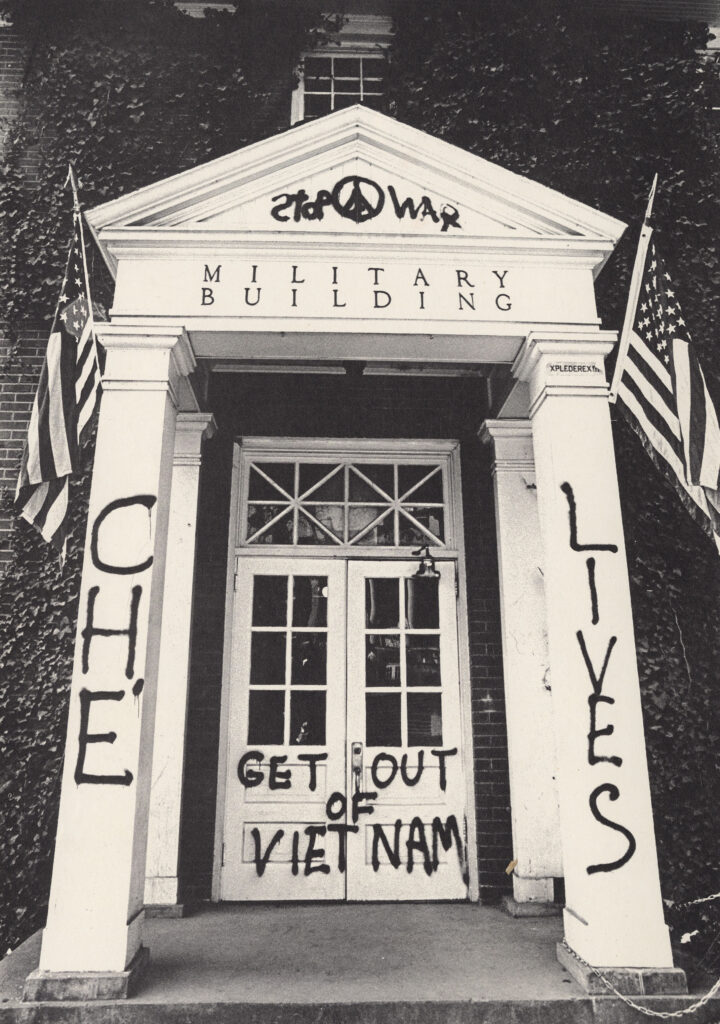
Courtesy of Hargrett Rare Book and Manuscript Library, University of Georgia Libraries.
Antiwar Protests
The growing sentiment among Americans against the Vietnam War (1964-73) generated numerous protests in Georgia. The largest antiwar demonstrations occurred during the fall of 1969, as part of the national “moratorium” campaign. In October and again in November, thousands of students gathered on campuses across the state to remember those killed in Southeast Asia. In the late 1960s and early 1970s, Atlanta witnessed many antiwar demonstrations, most of which followed a route down Peachtree Street to Piedmont Park.
Atlanta Counterculture
As the state’s capital and one of the South’s largest cities, Atlanta was home to numerous colleges and universities, and the city became a gathering point for many activists. It also became home to a countercultural community. Commonly called “hippies,” counterculture followers advocated illegal drug use, communal living, relaxed sexual norms, and other behaviors that went against mainstream American culture. A movement that shocked and confused many Americans, the counterculture seemed even more bizarre to many conservative southerners. The Atlanta counterculture centered mainly on Peachtree Street, between Eighth and Fourteenth streets. There, hippies found businesses that catered to their lifestyle, including music shops, coffeehouses, nightclubs, and health food stores.
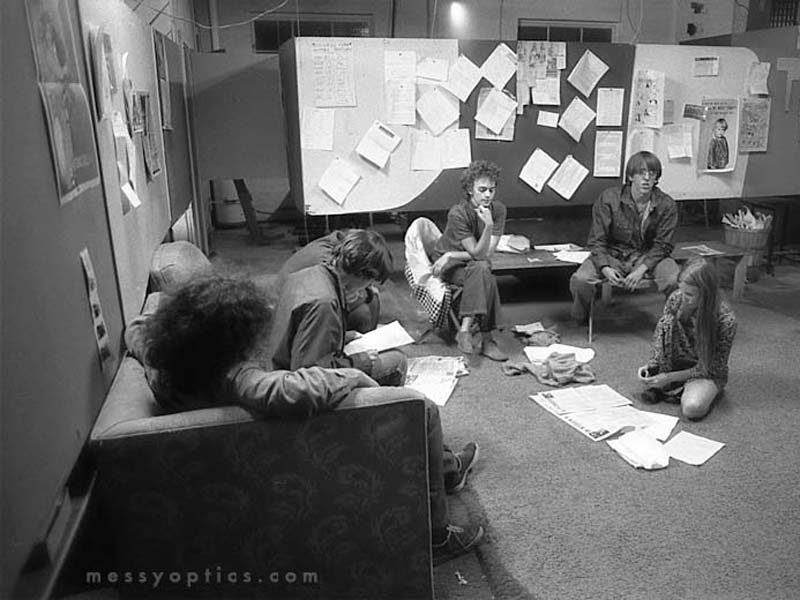
Photograph by Carter Tomassi
The success of the Great Speckled Bird, an underground newspaper that operated out of a house on Fourteenth Street in Atlanta, symbolized the considerable size and longevity of the 1960s student movement in Georgia. From 1968 until it ceased operation in 1976, writers for the Bird filled each weekly issue with stories about New Left causes. Founded by students from several Georgia colleges, the newspaper kept activists outside the metropolitan area in touch with the student movement. At its height in the early 1970s, activists distributed the paper throughout Georgia and the Southeast.
Women’s Rights and Gay Liberation Movements
The commitment to social change that motivated the student movement in the 1960s did not end with the coming of the 1970s. In Georgia, as across the nation, new organizations formed to address the concerns and fight for the rights of previously ignored or marginalized groups of people. Two of the most important movements focused on women’s and gay rights. Many female students who had protested for civil rights and against the Vietnam War began fighting for the equality of women. These women worked hard to change abortion laws and tried unsuccessfully to get the Equal Rights Amendment (ERA) approved by the Georgia legislature; the state house voted against the ERA in January 1974, and the state senate voted against it in February 1975. Gay men and women also began speaking out. At UGA the Committee on Gay Education successfully sued the university and in late 1972 won the right to hold a dance for gays and lesbians on university grounds.
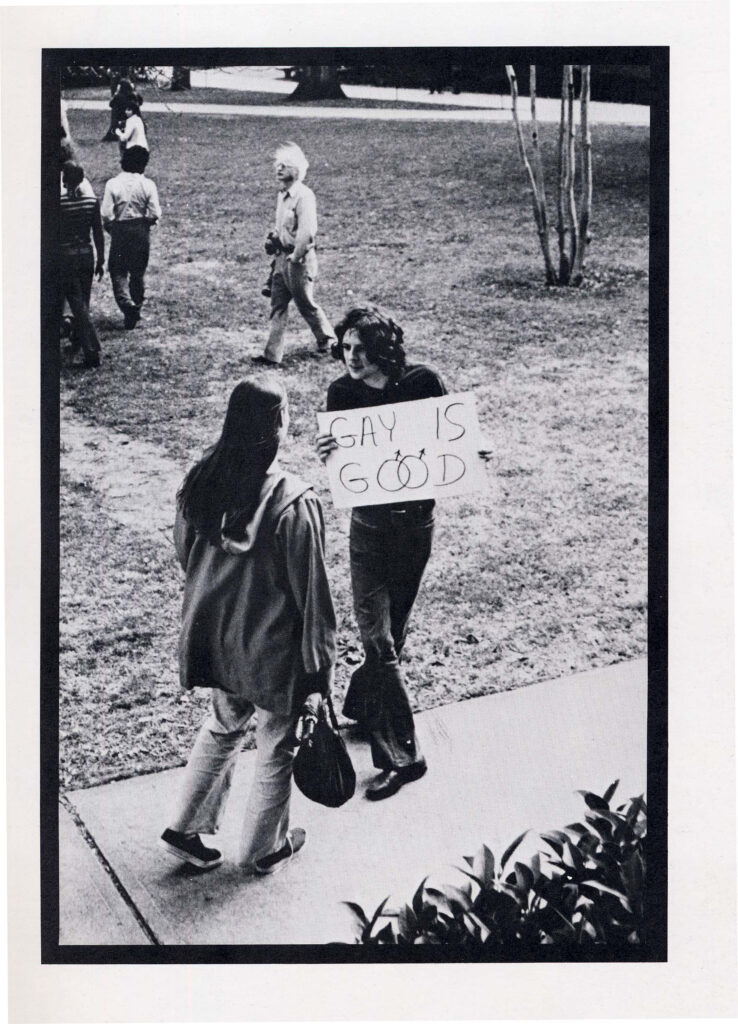
Courtesy of Hargrett Rare Book and Manuscript Library, University of Georgia Libraries.
Georgia student activists participated fully in the social and political upheaval that overtook the nation in the 1960s. Although often overshadowed by events in other parts of the nation, the Georgia student movement played an integral part in the story of the twentieth century’s most turbulent decade.


